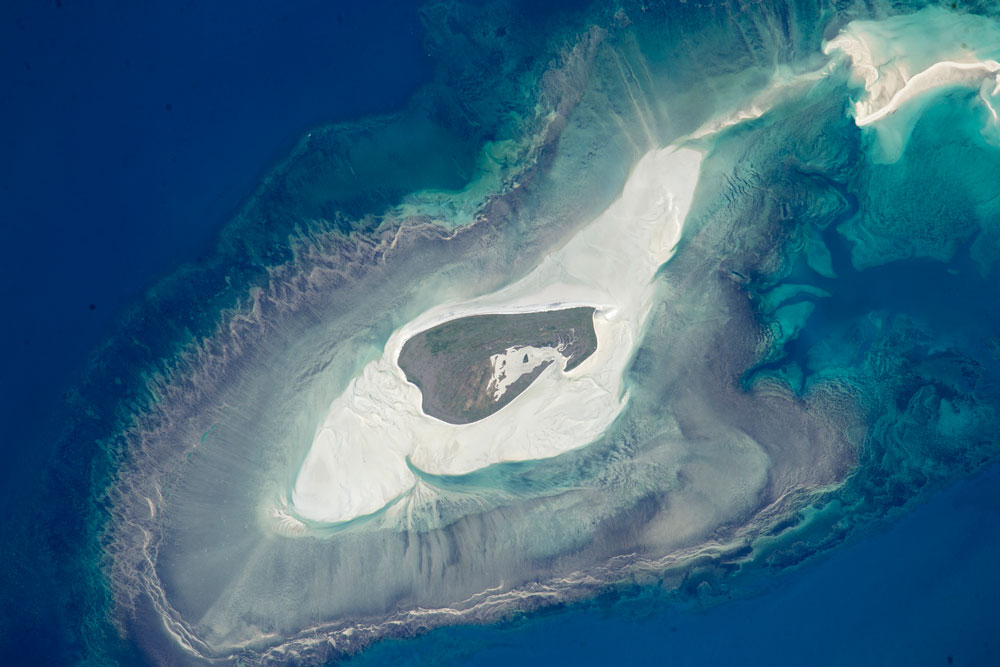Beautiful, Rat-Filled Island Seen From Space

Adele Island: From space, you can't even see the rats.
OK, it's not much of a tourism slogan, but this space-based image of a small island off the coast of northern Australia highlights a long-standing threat to bird life in the Pacific. Rattus exulans, the Polynesian rat, is an unwelcome intruder on this sandy outpost. The island is a major breeding site for several seabirds, and R. exulans is a notorious consumer of birds, chicks and eggs.
Humans have been spreading rats around the Pacific for thousands of years. According to the Invasive Species Compendium maintained by the agricultural nonprofit Centre for Biosciences and Agriculture, Polynesians colonizing the Pacific brought Polynesian rats to western islands like Samoa and Tonga as far back as 4,000 years ago. The discovery of the rats on Adele Island dates much later, to 1891 — the first time R. exulans was spotted in Australian territory. Today, the rat exists on several Australian islands, but it has not reached the mainland. [See Photos of Alaska's Rat Island]
This image of Adele island was taken by an astronaut aboard the International Space Station on June 11, according to NASA's Earth Observatory. From 249 miles (400 kilometers) up, the sandy base of the island can be seen below the water's surface. The island is 2 miles (2.9 km) long, according to the Earth Observatory, but the sandbanks stretch out 15.2 miles (24.5 km).
The island is 65 miles (104 km) from Australia, and rises no more than 13 feet (4 meters) above sea level. Its grassy, flat center shows few signs of humanity. A small solar-powered lighthouse seems to be the only man-made structure on the island.
For birds, though, Adele island is paradise. The island is the nesting ground for more than 1 percent of the world population of brown boobies, lesser frigate birds and is also home to nonbreeding red-necked stints and rrey-tailed tattlers, according to BirdLife International. A survey in 2004 recorded more than 24,000 birds on this tiny spit of sand.
Efforts are underway to rid the island of its rat population, according to the Earth Observatory. These attempts have succeeded on other islands, including the no-longer-appropriately-named Rat Island in Alaska. Conservationist groups and the U.S. Department of Fish and Wildlife poisoned the rats on that island in 2008, and the spot was declared rat-free in 2010. Several hundred birds died in the controversial effort, but wildlife officials argued that the mass poisoning was necessary to allow many thousands more birds to live without the predation of rats.
Get the world’s most fascinating discoveries delivered straight to your inbox.
Follow Stephanie Pappas on Twitter and Google+. Follow us @livescience, Facebook & Google+. Original article on Live Science.

Stephanie Pappas is a contributing writer for Live Science, covering topics ranging from geoscience to archaeology to the human brain and behavior. She was previously a senior writer for Live Science but is now a freelancer based in Denver, Colorado, and regularly contributes to Scientific American and The Monitor, the monthly magazine of the American Psychological Association. Stephanie received a bachelor's degree in psychology from the University of South Carolina and a graduate certificate in science communication from the University of California, Santa Cruz.
